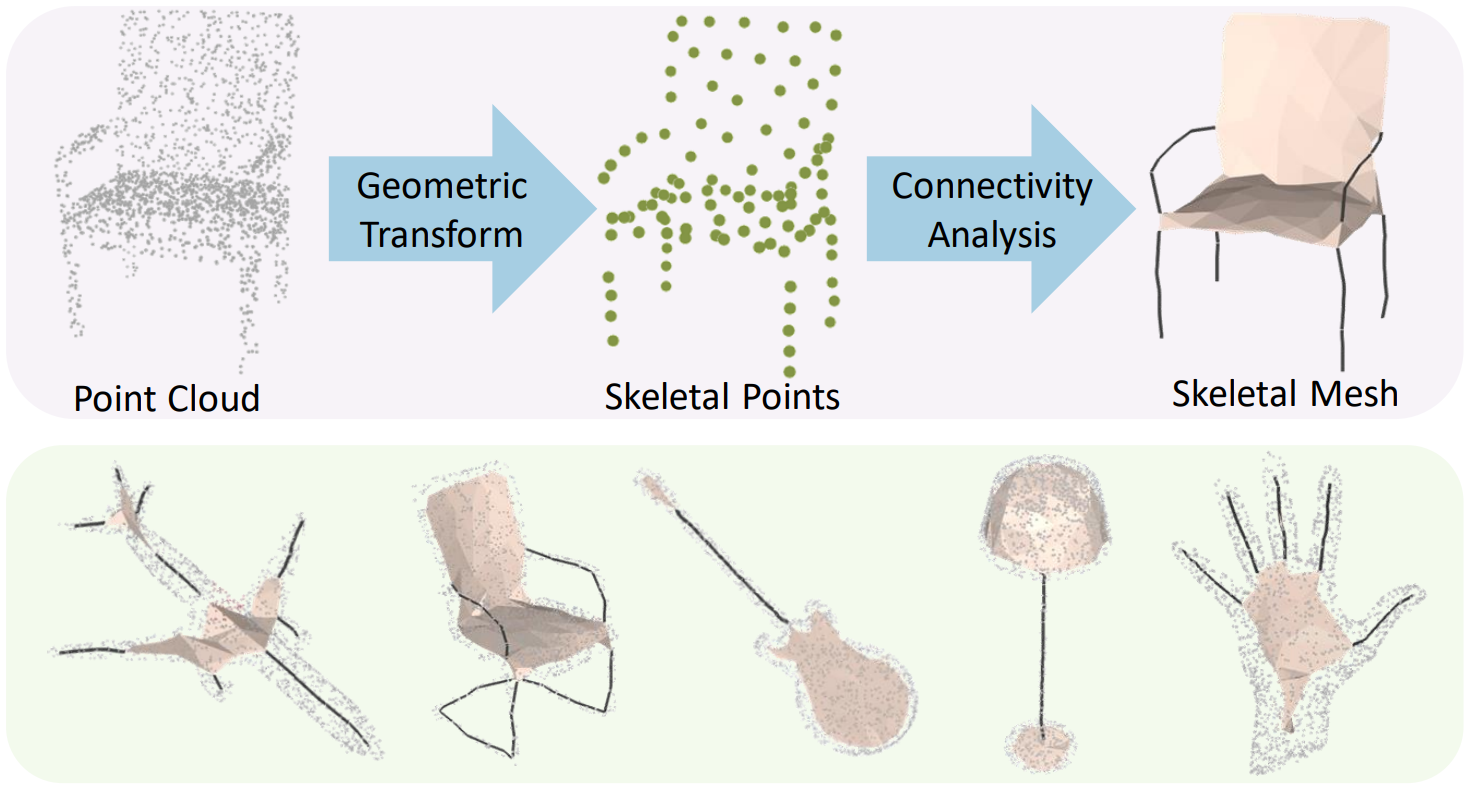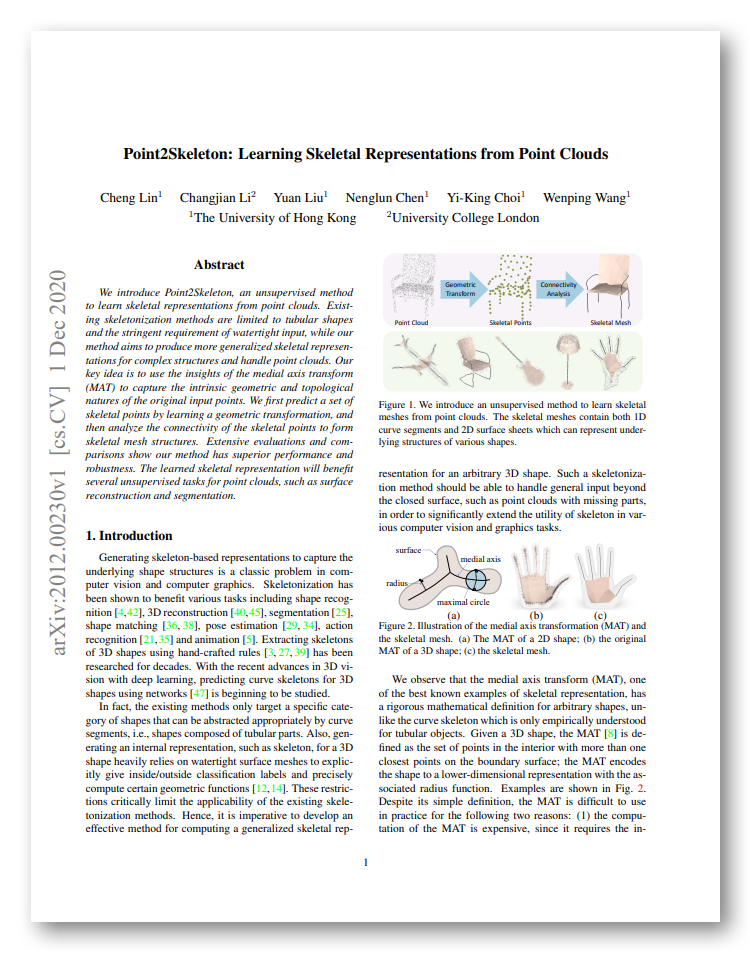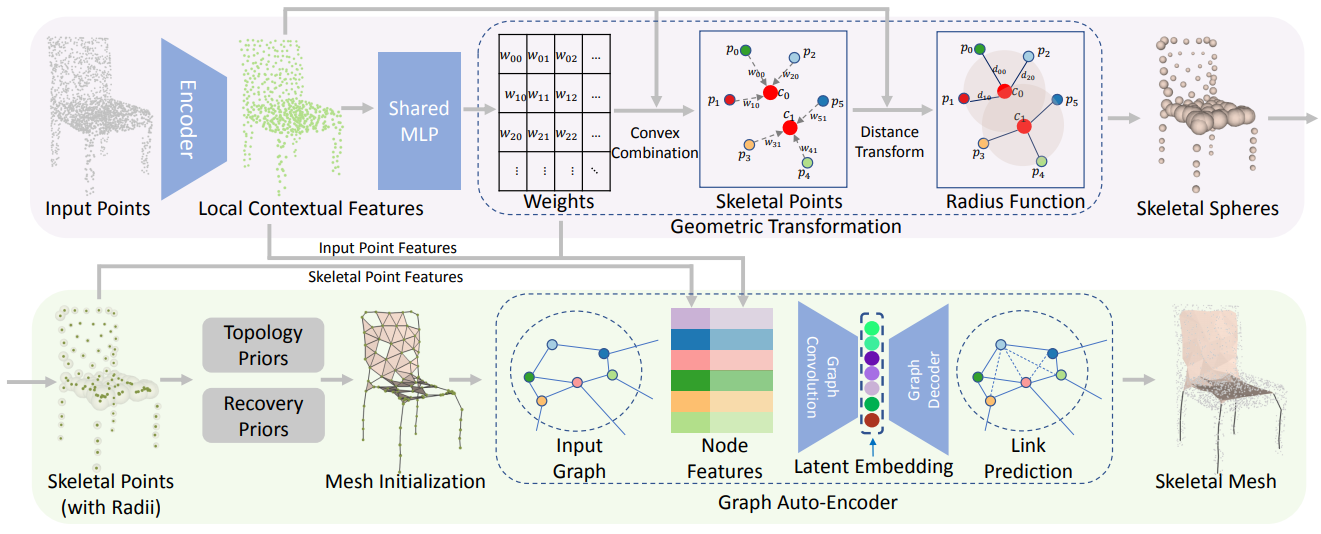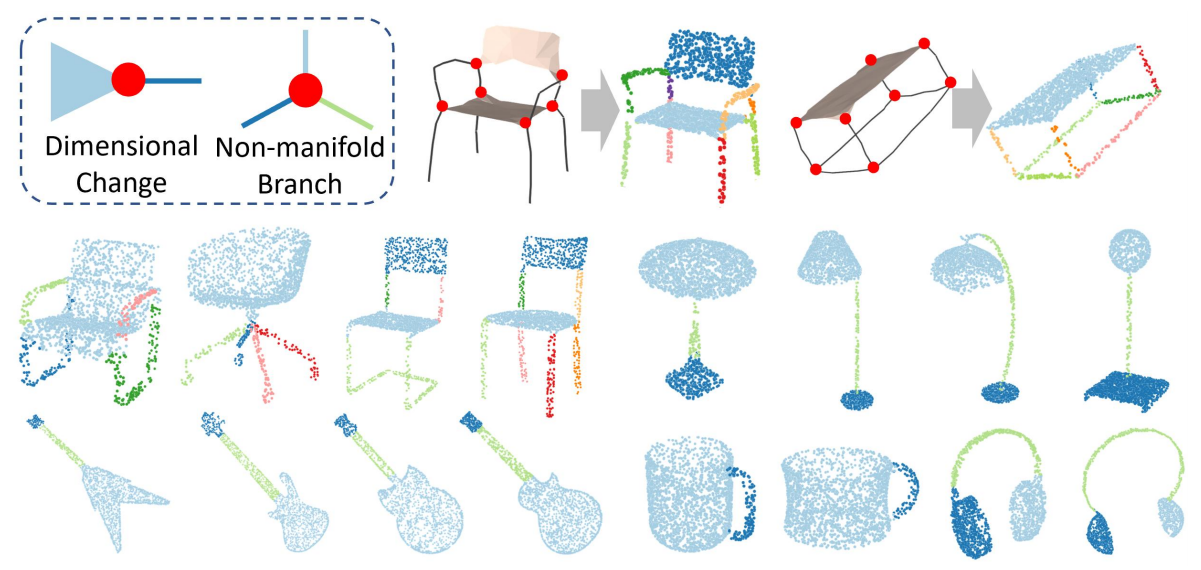| Point2Skeleton: Learning Skeletal Representations from Point Clouds |
Cheng Lin1, Changjian Li2, Yuan Liu1, Nenglun Chen1,
Yi-King Choi1, Wenping Wang1 |
| 1The University of Hong Kong, 2University College London |
| IEEE Conference on Computer Vision and Pattern Recognition (CVPR), 2021. |
| Oral Presentation, Best Paper Candidate |
| |
 |
|
Fig. 1. We introduce an unsupervised method to learn skeletal meshes from point clouds. The skeletal meshes contain both 1D curve segments and 2D surface sheets which can represent underlying structures of various shapes.
|
| Abstract |
|
We introduce Point2Skeleton, an unsupervised method to learn skeletal representations from point clouds. Existing skeletonization methods are limited to tubular shapes and the stringent requirement of watertight input, while our method aims to produce more generalized skeletal representations for complex structures and handle point clouds. Our key idea is to use the insights of the medial axis transform (MAT) to capture the intrinsic geometric and topological natures of the original input points. We first predict a set of skeletal points by learning a geometric transformation, and then analyze the connectivity of the skeletal points to form skeletal mesh structures. Extensive evaluations and comparisons show our method has superior performance and robustness. The learned skeletal representation will benefit several unsupervised tasks for point clouds, such as surface reconstruction and segmentation. |
 |
|
Paper [PDF]
Code [Github]
Citation:
Lin, Cheng, Changjian Li, Yuan Liu, Nenglun Chen, Yi-King Choi, and Wenping Wang. "Point2Skeleton: Learning Skeletal Representations from Point Clouds." In Proceedings of the IEEE/CVF Conference on Computer Vision and Pattern Recognition, pp. 4277-4286. 2021. (bibtex)
|
|
| |
| Network Overview |
 |
|
Fig. 2. An overview of our Point2Skeleton pipeline. Given a point cloud as input, first, we learn a geometric transformation via convex combinations to predict the skeletal points together with their radii. Second, we connect the skeletal points to form a mesh structure; we initialize a graph structure using two simple priors and formulate a link prediction problem using a graph auto-encoder to obtain a complete skeletal mesh.
|
| |
| Representative Results |
| Comparison |
 |
| Fig. 3. Qualitative comparison with the competitive point cloud skeletonization methods, i.e., L1-medial skeleton and deep point consolidation (DPC). |
| Applications - Reconstruction |
 |
| Fig. 4. Unsupervised surface reconstruction from point clouds. Our method can produce watertight surfaces without the need of surface normals and can capture the details of thin structures. |
| Applications - Segmentation |
 |
| Fig. 5. Unsupervised structural decomposition for point clouds by detecting dimensional changes and non-manifold branches on the skeletal mesh. |
| Applications - Inpaiting |
 |
| Fig. 6. Skeletal mesh prediction for reconstructing complete surfaces from point clouds with missing regions. |
| |
| |
| ©Changjian Li. Last update: June 23, 2021. |






